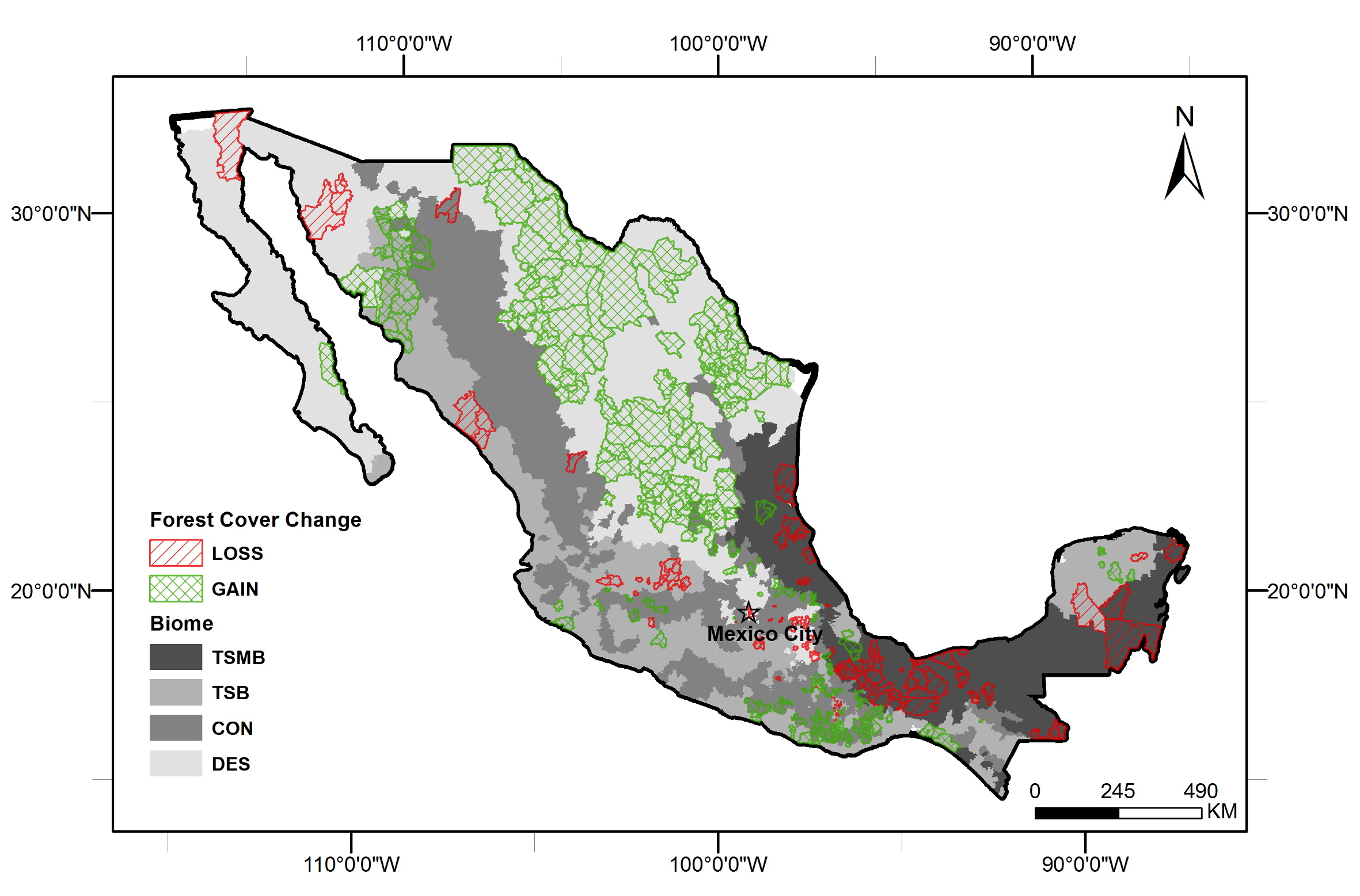
New publication in Land Use Policy explores the relationship between demographic and economic changes and forest cover change in Mexico from 2001-2010. In this collaboration between UF Geography’s Sadie J. Ryan and researchers from UCSB and CU Boulder, drivers of sub-national level forest cover change from 2001-2010 – both loss and gain – were explored using landscape modeling. The goal was to understand the roles of environment, economics – e.g. remittances from abroad, (un)employment, education, cattle ownership – and both internal and international migration in forest cover change across the different biomes of Mexico. The influence of sub-national and international migration together are rarely considered in studies of forest cover change, and was found to be important in every biome in Mexico. The relative roles and types of drivers differed by biomes, pointing to the multiple processes involved in forest loss and gain at sub-national levels.
Read Examining the relationship between migration and forest cover change in Mexico from 2001 to 2010 at Land Use Policy.